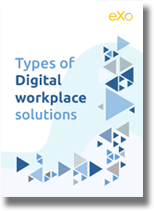- Veronika Mazour
- April 24, 2018
How can you ensure that your employees are engaged
Employee engagement is key to a high-performing organisation—that much is clear. But how can you ensure that your employees are engaged?
Motivational theories provide some clues. Let’s examine the two most well-known ones.

Content
1. Maslow’s pyramid of employee needs
Maslow’s hierarchy of needs, illustrated by Maslow’s pyramid, classifies all human needs in order of importance. When applied to employee needs, this framework gives interesting insights and pointers.
At the base of the pyramid lie physiological needs (e.g. food, water, clothes and shelter), immediately followed by safety needs. In terms of employee happiness, these needs refer to salary, benefits and job security.
The next layer features love and belonging, which are essential to human happiness. In the professional context, this refers to relationships with management and peers as well as the overall company culture.
After the first three needs comes esteem, i.e. being recognized for one’s efforts, receiving input and getting career advancement opportunities.
Finally comes self-actualization and self-transcendence. This highest category refers to needs such as personal skill development, work challenges and work meaning.
Even though some job satisfaction factors fit neatly into one of these categories, most are multidimensional; thus, they can fit into several. For example, career advancement opportunities are linked to being recognized for one’s input (esteem) and to being paid more (physiological). In the same way, work/life balance contributes to one’s family and social life outside the office (love) and to one’s personal development (self-actualization). Therefore, it is not always easy to determine which factor is more important to overall employee satisfaction. Herzberg’s theory addresses this issue to some extent.
2. Herzberg’s dual-factor theory
On the contrary, motivation factors deal with the job itself and impact motivation; these factors include challenging, meaningful work; recognition of one’s input and responsibility
3. Employee satisfaction criteria and evolution
Even though both theories date more than 50 years back, to a time before employee engagement was a key topic, they are still relevant, explaining a lot of what we see in employee satisfaction surveys today.
- Respectful treatment;
- Compensation;
- Trust in management; and
- Job security.

FREE WHITE PAPER
Types of Digital workplace solutions
The modern workplace has evolved significantly in recent years, with advancements in technology, the growing number of tools …
4. How to increase employee engagement
company intranet
FAQ
You will find here Frequently Asked Questions about employee engagement with all the answers in one place.
What is employee engagement?
It’s the willingness of an employee to help his company progress. It is a positive behavior, which manifests itself by a strong involvement in his work and by a great motivation. This allows the company to evolve both in terms of its activity and on a human level.
How to Improve Employee Engagement in the Workplace?
- Ensure a strong corporate culture
- Ensure good relationship with management
- Foster good relationships between the colleagues
- Think about employee recognition
- Express meaning for work in your organization
- Make well-being and work/life balance your priority
- Allow more flexibility and autonomy
- Invest in skills development and training
➝ Find out how to improve employee engagement in the workplace
- Tags: Employee engagement, Tips & Tricks
Related posts
- All
- eXo
- Digital workplace
- Employee engagement
- Open source
- Future of work
- Internal communication
- Collaboration
- News
- intranet
- workplace
- Knowledge management
- Employee experience
- Employee productivity
- onboarding
- Employee recognition
- Change management
- Cartoon
- Digital transformation
- Infographic
- Remote work
- Industry trends
- Product News
- Thought leadership
- Tips & Tricks
- Tutorial
- Uncategorized
Leave a Reply
( Your e-mail address will not be published)


